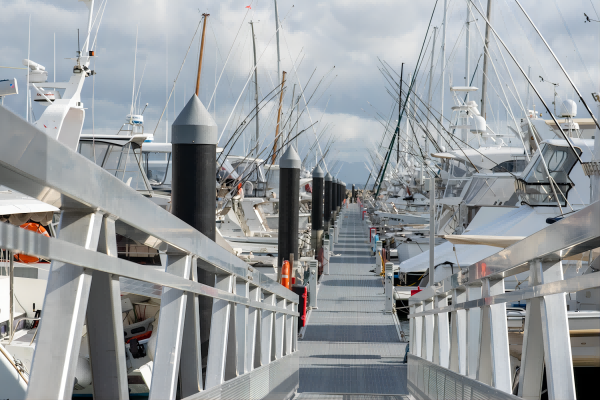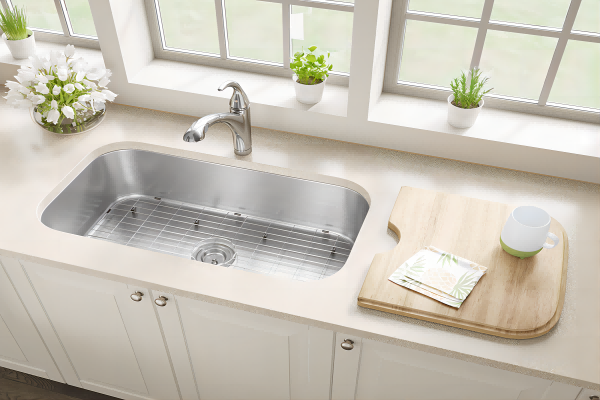Stainless steel is a generic term for a family of corrosion resistant alloy steels containing 10.5% or more chromium.
All stainless steels have a high resistance to corrosion. This resistance to attack is due to the naturally occurring chromium-rich oxide film formed on the surface of the steel. Although extremely thin, this invisible, inert film is tightly adherent to the metal and extremely protective in a wide range of corrosive media. The film is rapidly self repairing in the presence of oxygen, and damage by abrasion, cutting or machining is quickly repaired.
The magic ingredient in stainless steel is the chrome that’s is added to it – chrome chrome allows for the formation of a tough, invisible, chromium oxide film on the steel surface which is resistant to scratches and corrosion and is exceptionally hygienic and easy to clean.
Stainless Steel is commonly used in the manufacture of cutlery, pots and pans, but its strength is also appreciated for the more industrial applications.
The largest consumer of stainless steel is the car manufacturing market for the production of catalytic converters and components. It is also extensively in architecture and design and can be found in a range of places from hospital bathrooms and surgeries to designer boardrooms and homes.
Carbon steel rusts when exposed to air and moisture. The rust, or iron oxide film, is active and accelerates corrosion by forming more iron oxide. In contrast, stainless steel has chromium present which blocks corrosion or rust from spreading into the metal’s internal structure.
Stainless Steel’s resistance to staining, its low maintenance, low cost, and renowned shine make it perfect for a host of applications.
When to go for Stainless?
Where quality with a timeless appeal is required
Cost savings over the longer term
In corrosive environments, such as on the coast
Environments with very low temperatures to prevent brittleness
Environments with extremely high temperatures to maintain the strength
Where high strength over mass is required
Where hygienic conditions and easy cleanability is a priority
Stainless Steel is preferred when aesthetics are important. It does not rust and paint is therefore not necessary
Core Considerations
Know the grade of material :
Selecting the correct grade is vital as risk taking is costly
Know the design :
Good design ensures savings for fabricator and user
Know your surface finishes :
Good finishes perform well and looks great
Apply good housekeeping :
Proper care and maintenance, which is minimal, will ensure timeless quality
Benefits of Stainless steel
Long Term Value
When the total life cycle costs are considered, stainless steel is often the least expensive option.
Low Maintenance Costs
Stainless Steel normally only requires a periodic wash using a dilute solution of household detergent and water. Surfaces should be washed with a soft sponge and water.
Ease of Fabrication
Modern stainless manipulation techniques mean that stainless steel can be cut, welded, formed and fabricated as readily as traditional steel and other materials.
Corrosion Resistance
Lower alloy grades resist corrosion in normal atmospheric and potable water environments, while the more highly alloyed grades can resist corrosion in many acids and alkaline solutions, and some chloride bearing environments, properties that are found in process plants.
Strength
The mechanical properties of stainless steel allows thinner sections to be used than with other materials, thus reducing weight without compromising strength. Austenitic grades harden with cold working and duplex steel allows for reduced thicknesses over traditional grades. Costs are therefore reduced.
Hygiene
Internationally recognised as the most hygienic surface for the preparation of food. The unique surface for the preparation of food. The unique surface of stainless steel has no pores or cracks to harbour dirt, grime or bacteria. This cleanability far exceeds other surfaces making it the first choice for strict hygienic conditions, such as hospitals, commercial kitchens, abattoirs and other food and beverage processing plants.
Aesthetic Appearance
The bright, easily maintained surface of stainless steel provides an attractive and contemporary appearance, ideal for a wide and growing range of applications
Post time: Apr-23-2023






